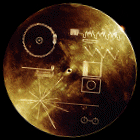 With less than a month to go before the launch of the first of two Voyager unmanned spacecraft, NASA attaches copper phonograph records, encased in lightweight, protective golden casings, to each of the Voyager probes. With participation from Carl Sagan (who led the effort to mount a plaque on the Pioneer probes consisting only of visual information), SETI pioneer Frank Drake, Jon Lomberg and others, the 12″ LP consists of not only sound recordings, but photos and diagrams depicting the diversity and composition of life on Earth. The sounds include various kinds of Earth wildlife, spoken messages from President Jimmy Carter and United Nations Secretary-General Kurt Waldheim, music from Beethoven and Bach to Chuck Berry (the Beatles decline permission to include “Here Comes The Sun”), and Carl Sagan’s young son Nick delcaring “Greetings from the children of planet Earth.” The outer casing includes a playback mechanism and diagrams for how to use it.
With less than a month to go before the launch of the first of two Voyager unmanned spacecraft, NASA attaches copper phonograph records, encased in lightweight, protective golden casings, to each of the Voyager probes. With participation from Carl Sagan (who led the effort to mount a plaque on the Pioneer probes consisting only of visual information), SETI pioneer Frank Drake, Jon Lomberg and others, the 12″ LP consists of not only sound recordings, but photos and diagrams depicting the diversity and composition of life on Earth. The sounds include various kinds of Earth wildlife, spoken messages from President Jimmy Carter and United Nations Secretary-General Kurt Waldheim, music from Beethoven and Bach to Chuck Berry (the Beatles decline permission to include “Here Comes The Sun”), and Carl Sagan’s young son Nick delcaring “Greetings from the children of planet Earth.” The outer casing includes a playback mechanism and diagrams for how to use it.
In the decades to come, fictional aliens visiting or invading Earth because they have viewed the Voyager “Golden Record” becomes a staple of science fiction media.

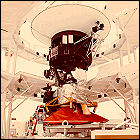 Mere weeks before the launch of the first Voyager spacecraft, NASA swaps Voyager 2 and Voyager 1. Repeated failures have plagued the attitude and articulation control and flight data subsystems in the spacecraft designated VGR77-2, leaving mission planners with doubt about its flightworthiness. VGR77-3 thus becomes Voyager 2, and VGR77-2 undergoes repairs to correct its problems before being designated Voyager 1. The two vehicles’ thermonuclear power sources are swapped, as whichever one is Voyager 2 will require a longer-lasting power source to power all instruments for possible visits to Uranus and Neptune following the 1981 Saturn encounter. (A third vehicle, VGR77-1, is an engineering test spare which eventually goes on display at the JPL campus in Pasadena.)
Mere weeks before the launch of the first Voyager spacecraft, NASA swaps Voyager 2 and Voyager 1. Repeated failures have plagued the attitude and articulation control and flight data subsystems in the spacecraft designated VGR77-2, leaving mission planners with doubt about its flightworthiness. VGR77-3 thus becomes Voyager 2, and VGR77-2 undergoes repairs to correct its problems before being designated Voyager 1. The two vehicles’ thermonuclear power sources are swapped, as whichever one is Voyager 2 will require a longer-lasting power source to power all instruments for possible visits to Uranus and Neptune following the 1981 Saturn encounter. (A third vehicle, VGR77-1, is an engineering test spare which eventually goes on display at the JPL campus in Pasadena.) NASA launches the first High Energy Astronomy Observatory satellite in Earth orbit, continuing the survey of the sky with sensitive detectors designed to find gamma ray and X-ray sources. HEAO-1 will remain in service through January 1979, and will re-enter Earth’s atmosphere in March 1979.
NASA launches the first High Energy Astronomy Observatory satellite in Earth orbit, continuing the survey of the sky with sensitive detectors designed to find gamma ray and X-ray sources. HEAO-1 will remain in service through January 1979, and will re-enter Earth’s atmosphere in March 1979. NASA launches Voyager 2 (weeks ahead of Voyager 1), giving the unmanned space probe the best shot of taking advantage of a favorable planetary alignment known as the “Grand Tour”. Using a series of carefully calculated gravity assists, Voyager has the potential to visit all four of the major outer gas planets – Jupiter, Saturn, Uranus and Neptune – in under 15 years without having to expend fuel to make the trip. If Voyager 2 survives long enough to visit Uranus or Neptune, it will become the first man-made spacecraft to visit either planet.
NASA launches Voyager 2 (weeks ahead of Voyager 1), giving the unmanned space probe the best shot of taking advantage of a favorable planetary alignment known as the “Grand Tour”. Using a series of carefully calculated gravity assists, Voyager has the potential to visit all four of the major outer gas planets – Jupiter, Saturn, Uranus and Neptune – in under 15 years without having to expend fuel to make the trip. If Voyager 2 survives long enough to visit Uranus or Neptune, it will become the first man-made spacecraft to visit either planet.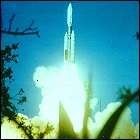 The unmanned robotic
The unmanned robotic 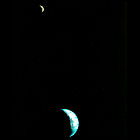 Barely two weeks after launch, Voyager 1 captures the first-ever photo of the Earth and its moon in their entirety, from a distance of just over seven million miles. Due to the moon’s relatively low visibility, JPL has to “brighten” the moon so it’s visible in the photo. Voyager 1 soon loses sight of Earth and the moon as it speeds toward Jupiter, a planet it won’t reach until 1979.
Barely two weeks after launch, Voyager 1 captures the first-ever photo of the Earth and its moon in their entirety, from a distance of just over seven million miles. Due to the moon’s relatively low visibility, JPL has to “brighten” the moon so it’s visible in the photo. Voyager 1 soon loses sight of Earth and the moon as it speeds toward Jupiter, a planet it won’t reach until 1979.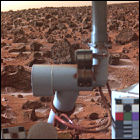 NASA’s Viking 2 lander confirms a surprising finding first detected in black-and-white images just days earlier: Mars has naturally occurring frost. Scientists try to determine, from images alone, if the frost forms from condensation due to overnight cold (as on Earth), or through some other atmospheric mechanism. But the finding does confirm enough moisture in the atmosphere to condense on the Martian surface, decades before surface water is confirmed on the red planet.
NASA’s Viking 2 lander confirms a surprising finding first detected in black-and-white images just days earlier: Mars has naturally occurring frost. Scientists try to determine, from images alone, if the frost forms from condensation due to overnight cold (as on Earth), or through some other atmospheric mechanism. But the finding does confirm enough moisture in the atmosphere to condense on the Martian surface, decades before surface water is confirmed on the red planet. NASA’s Viking 2 orbiter closes to within 40 miles of Mars’ small outermost moon, Deimos, the first spacecraft to visit the tiny moon up close. Deimos is found to be cratered and irregularly shaped, confirming the likelihood that it is an asteroid that once strayed close enough to Mars to fall into orbit.
NASA’s Viking 2 orbiter closes to within 40 miles of Mars’ small outermost moon, Deimos, the first spacecraft to visit the tiny moon up close. Deimos is found to be cratered and irregularly shaped, confirming the likelihood that it is an asteroid that once strayed close enough to Mars to fall into orbit. NASA announces that Voyagers 1 and 2 may be in a unique position to study the newly-discovered Comet Kohler 1977 XIV, discovered just days before Voyager 1’s launch. Both Voyagers are expected to pass Comet Kohler at a distance of a little over 1 astronomical unit (AU), equivalent to the distance between Earth and the Sun, in November, and the possibility of examining the comet with their onboard instruments is proposed. This plan is eventually abandoned, since the comet will track near the sun, direct exposure to which could harm the television tube cameras installed aboard each Voyager. The exploration of comets with robotic spacecraft will have to wait until the 1980s.
NASA announces that Voyagers 1 and 2 may be in a unique position to study the newly-discovered Comet Kohler 1977 XIV, discovered just days before Voyager 1’s launch. Both Voyagers are expected to pass Comet Kohler at a distance of a little over 1 astronomical unit (AU), equivalent to the distance between Earth and the Sun, in November, and the possibility of examining the comet with their onboard instruments is proposed. This plan is eventually abandoned, since the comet will track near the sun, direct exposure to which could harm the television tube cameras installed aboard each Voyager. The exploration of comets with robotic spacecraft will have to wait until the 1980s.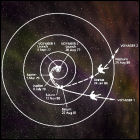 At a distance of nearly 60,000,000 miles from Earth, NASA’s Voyager 1 and Voyager 2 spacecraft cross the orbit of Mars as the twin space probes continue their outbound race toward Jupiter. Moving at 13 miles per second, Voyager 1 will overtake its identical twin, Voyager 2, at the end of 1977, with both spacecraft expected to reach Jupiter in 1979. From here, they will plunge through the asteroid belt between Mars and Jupiter, though fears of damage occurring in this part of space have been allayed by the successful asteroid belt passage of Pioneers 10 and 11 in the early 1970s.
At a distance of nearly 60,000,000 miles from Earth, NASA’s Voyager 1 and Voyager 2 spacecraft cross the orbit of Mars as the twin space probes continue their outbound race toward Jupiter. Moving at 13 miles per second, Voyager 1 will overtake its identical twin, Voyager 2, at the end of 1977, with both spacecraft expected to reach Jupiter in 1979. From here, they will plunge through the asteroid belt between Mars and Jupiter, though fears of damage occurring in this part of space have been allayed by the successful asteroid belt passage of Pioneers 10 and 11 in the early 1970s.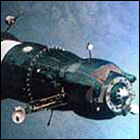 The first Soviet-made uncrewed Progress resupply vehicle lifts off en route to the manned Salyut 6 space station. Looking more or less like a Soyuz vehicle, Progress is an automated freighter whose systems lock onto Salyut’s docking transponder, guiding the unmanned craft toward a smooth and completely automated docking (though ground controllers stand by to take manual control by remote). Since Progress is not required to return a crew to Earth, its engines and their fuel can help to boost Salyut 6 into a higher orbit when necessary. It carries over 5,000 pounds of food, clothes and other supplies, and can automatically refill the station’s air and fuel supplies. Progress vehicles become an integral part of the space program, remaining in service long enough to resupply the International Space Station in the 21st century.
The first Soviet-made uncrewed Progress resupply vehicle lifts off en route to the manned Salyut 6 space station. Looking more or less like a Soyuz vehicle, Progress is an automated freighter whose systems lock onto Salyut’s docking transponder, guiding the unmanned craft toward a smooth and completely automated docking (though ground controllers stand by to take manual control by remote). Since Progress is not required to return a crew to Earth, its engines and their fuel can help to boost Salyut 6 into a higher orbit when necessary. It carries over 5,000 pounds of food, clothes and other supplies, and can automatically refill the station’s air and fuel supplies. Progress vehicles become an integral part of the space program, remaining in service long enough to resupply the International Space Station in the 21st century.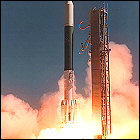 A joint project between NASA and the European Space Agency, the International Ultraviolet Explorer is launched atop a Delta rocket from Cape Canaveral. The precursor of later space-based telescopes such as the Hubble Space Telescope, IUE produces no photographic images, instead concentrating on detecting ultraviolet emissions from distant objects. IUE adds significantly to the growing body of space science, and is the first satellite to give astronomers the chance to immediately aim its detectors at targets that yield unexpected results, allowing it to respond swiftly to such rapidly developing phenomena as Supernova 1987A. Designed to stay operational for three years, IUE will remain online for almost two decades.
A joint project between NASA and the European Space Agency, the International Ultraviolet Explorer is launched atop a Delta rocket from Cape Canaveral. The precursor of later space-based telescopes such as the Hubble Space Telescope, IUE produces no photographic images, instead concentrating on detecting ultraviolet emissions from distant objects. IUE adds significantly to the growing body of space science, and is the first satellite to give astronomers the chance to immediately aim its detectors at targets that yield unexpected results, allowing it to respond swiftly to such rapidly developing phenomena as Supernova 1987A. Designed to stay operational for three years, IUE will remain online for almost two decades.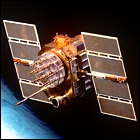 The U.S. Air Force launches NAVSTAR-1, the first of a planned constellation of experimental satellites supporting the Department of Defense’s Global Positioning System project. Envisioned as a network of satellites providing extremely accurate location data for military purposes, the Global Positioning System will later grow to service civilian customers as well. Three other NAVSTAR satellites are launched in 1978 alone, and later satellites in the original NAVSTAR series will be launched betwen 1980 and 1985. Unlike the later, more advanced NAVSTAR II satellites of the 1990s, data from the original NAVSTAR constellation is restricted to the American military.
The U.S. Air Force launches NAVSTAR-1, the first of a planned constellation of experimental satellites supporting the Department of Defense’s Global Positioning System project. Envisioned as a network of satellites providing extremely accurate location data for military purposes, the Global Positioning System will later grow to service civilian customers as well. Three other NAVSTAR satellites are launched in 1978 alone, and later satellites in the original NAVSTAR series will be launched betwen 1980 and 1985. Unlike the later, more advanced NAVSTAR II satellites of the 1990s, data from the original NAVSTAR constellation is restricted to the American military.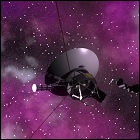 NASA’s Voyager 1 space probe, en route to its first destination, develops a potentially mission-jeopardizing problem: the scan platform, which contains and aims many of Voyager’s scientific instruments, jams and becomes stuck in place. As Voyager 1 has yet to even reach Jupiter, this threatens to make it an expensive failure. Transmitting commands from Earth to give the scan platform a gentle three-axis workout, engineers at NASA manage to free the stuck instruments, salvaging Voyager 1’s mission to the outer planets and their moons. (A similar fault develops in Voyager 2 during its 1981 encounter with Saturn.)
NASA’s Voyager 1 space probe, en route to its first destination, develops a potentially mission-jeopardizing problem: the scan platform, which contains and aims many of Voyager’s scientific instruments, jams and becomes stuck in place. As Voyager 1 has yet to even reach Jupiter, this threatens to make it an expensive failure. Transmitting commands from Earth to give the scan platform a gentle three-axis workout, engineers at NASA manage to free the stuck instruments, salvaging Voyager 1’s mission to the outer planets and their moons. (A similar fault develops in Voyager 2 during its 1981 encounter with Saturn.) NASA launches Landsat 3, the latest in a constellation of satellites derived from the design of the experimental Nimbus weather satellites. This is the last Landsat to use the Nimbus framework, and the last to be managed exclusively by NASA; Landsat 3 remains in service through 1983.
NASA launches Landsat 3, the latest in a constellation of satellites derived from the design of the experimental Nimbus weather satellites. This is the last Landsat to use the Nimbus framework, and the last to be managed exclusively by NASA; Landsat 3 remains in service through 1983. NASA launches the 1,100 pound Pioneer Venus Orbiter, designed to orbit Venus for a year to study the planet’s atmosphere and its interaction with other space phenomena. Though launched separately, the two Pioneer Venus spacecraft will arrive at Venus within days of one another in December 1978. The Orbiter takes radar observations of the cloud-shrouded planet, from which the first surface map of Venus is derived. As with many other unmanned NASA spacecraft designed for relatively short-duration missions, the Pioneer Venus Orbiter outlives its design lifespan, staying fully functional into the 1990s and eventually becoming the only American spacecraft to view Halley’s Comet in 1986.
NASA launches the 1,100 pound Pioneer Venus Orbiter, designed to orbit Venus for a year to study the planet’s atmosphere and its interaction with other space phenomena. Though launched separately, the two Pioneer Venus spacecraft will arrive at Venus within days of one another in December 1978. The Orbiter takes radar observations of the cloud-shrouded planet, from which the first surface map of Venus is derived. As with many other unmanned NASA spacecraft designed for relatively short-duration missions, the Pioneer Venus Orbiter outlives its design lifespan, staying fully functional into the 1990s and eventually becoming the only American spacecraft to view Halley’s Comet in 1986.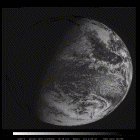 NOAA’s GOES-3 Geostationary Operational Environmental Satellite is launched from Cape Canaveral into a geosynchronous orbit over the Indian Ocean, replacing the first operational GOES satellite, GOES-1. GOES-3 will serve as a working weather satellite for over a decade, ultimately decommissioned from that role in 1989 and then serving as a communications satellite for the Pacific Ocean region and Antarctica, a role it continues to fill over 35 years later.
NOAA’s GOES-3 Geostationary Operational Environmental Satellite is launched from Cape Canaveral into a geosynchronous orbit over the Indian Ocean, replacing the first operational GOES satellite, GOES-1. GOES-3 will serve as a working weather satellite for over a decade, ultimately decommissioned from that role in 1989 and then serving as a communications satellite for the Pacific Ocean region and Antarctica, a role it continues to fill over 35 years later. Following a communications blackout scare in April 1978, JPL uploads an autonomous command sequence to the Voyager 2 unmanned space probe, which would allow the spacecraft to carry out a self-guided mission to Jupiter and Saturn, the results of which would automatically be transmitted to Earth even if Voyager 2 can receive no further instructions from Earth. Due to the command storage limitations of Voyager 2’s onboard computer, this automatic backup mission plan makes no allowances for pictures of Jupiter, saving that capability for Saturn instead. In the event that Voyager 2 can no longer hear commands from Earth, the extended mission to Uranus and Neptune would be forfeited in favor of “minimum science return” from Jupiter and Saturn.
Following a communications blackout scare in April 1978, JPL uploads an autonomous command sequence to the Voyager 2 unmanned space probe, which would allow the spacecraft to carry out a self-guided mission to Jupiter and Saturn, the results of which would automatically be transmitted to Earth even if Voyager 2 can receive no further instructions from Earth. Due to the command storage limitations of Voyager 2’s onboard computer, this automatic backup mission plan makes no allowances for pictures of Jupiter, saving that capability for Saturn instead. In the event that Voyager 2 can no longer hear commands from Earth, the extended mission to Uranus and Neptune would be forfeited in favor of “minimum science return” from Jupiter and Saturn.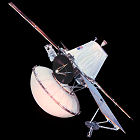 Less than two years after arriving at Mars, the “mothership” orbiter that delivered the
Less than two years after arriving at Mars, the “mothership” orbiter that delivered the 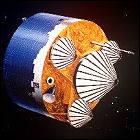 Trailing its supporting orbiter by several months, the Pioneer Venus Multiprobe – also known as Pioneer 13 – lifts off en route to deposit its payload of four atmospheric entry probes designed to measure the planet’s inhospitable, poisonous atmosphere. Following the launch of those probes, the Multiprobe carrier vehicle will then enter the atmosphere of Venus itself and take measurements, burning up before it ever reaches the surface.
Trailing its supporting orbiter by several months, the Pioneer Venus Multiprobe – also known as Pioneer 13 – lifts off en route to deposit its payload of four atmospheric entry probes designed to measure the planet’s inhospitable, poisonous atmosphere. Following the launch of those probes, the Multiprobe carrier vehicle will then enter the atmosphere of Venus itself and take measurements, burning up before it ever reaches the surface. The third in a series of three International Sun-Earth Explorer satellites, a joint effort between NASA and the European Space Agency, is launched aboard a Delta rocket from Cape Canaveral. Unlike the other ISEE satellites, ISEE-3 is intended to take up a “halo” orbit at the L1 LaGrangian point between the sun and Earth, the first man-made space vehicle to do so. There it will study the interaction between the solar wind and Earth’s own magnetosphere. Once its mission is completed in the early 1980s, it will be redirected and renamed to become the first Earth spacecraft to study a comet at close range.
The third in a series of three International Sun-Earth Explorer satellites, a joint effort between NASA and the European Space Agency, is launched aboard a Delta rocket from Cape Canaveral. Unlike the other ISEE satellites, ISEE-3 is intended to take up a “halo” orbit at the L1 LaGrangian point between the sun and Earth, the first man-made space vehicle to do so. There it will study the interaction between the solar wind and Earth’s own magnetosphere. Once its mission is completed in the early 1980s, it will be redirected and renamed to become the first Earth spacecraft to study a comet at close range.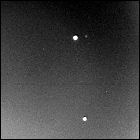 Voyager 1 emerges unharmed from what is considered the outer limit of the asteroid belt between Mars and Jupiter, having entered this 223,000,000-mile-wide zone of space in December 1977. Voyager 2 is expected to emerge similarly unscathed in late October 1978. NASA’s Pioneer 10 and 11 spacecraft had already demonstrated, in the early 1970s, that passage through the asteroid belt without mission-jeopardizing damage is possible. Both spacecraft are already imaging Jupiter from a distance of less than 180,000,000 miles, now meeting or exceeding the resolution of the best photos of Jupiter taken from Earth-based telescopes.
Voyager 1 emerges unharmed from what is considered the outer limit of the asteroid belt between Mars and Jupiter, having entered this 223,000,000-mile-wide zone of space in December 1977. Voyager 2 is expected to emerge similarly unscathed in late October 1978. NASA’s Pioneer 10 and 11 spacecraft had already demonstrated, in the early 1970s, that passage through the asteroid belt without mission-jeopardizing damage is possible. Both spacecraft are already imaging Jupiter from a distance of less than 180,000,000 miles, now meeting or exceeding the resolution of the best photos of Jupiter taken from Earth-based telescopes.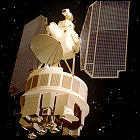 NASA launches the Nimbus 7 satellite, the last of a series of experimental satellites designed to test new weather and climate detection technologies. This satellite tests more precise attitude control systems and instruments designed to monitor the layer of ozone within Earth’s atmosphere. Many of the technologies developed in the Nimbus series are transferred not to future weather satellites, but to future Landsat Earth observation satellites.
NASA launches the Nimbus 7 satellite, the last of a series of experimental satellites designed to test new weather and climate detection technologies. This satellite tests more precise attitude control systems and instruments designed to monitor the layer of ozone within Earth’s atmosphere. Many of the technologies developed in the Nimbus series are transferred not to future weather satellites, but to future Landsat Earth observation satellites. NASA launches the second High Energy Astronomy Observatory satellite, which is given the nickname “Einstein” when it enters service. HEAO-2 is a dedicated X-ray telescope with unprecedented sensitivity and accuracy, and will remain in service through March 1982, re-entering Earth’s atmosphere a week afterward.
NASA launches the second High Energy Astronomy Observatory satellite, which is given the nickname “Einstein” when it enters service. HEAO-2 is a dedicated X-ray telescope with unprecedented sensitivity and accuracy, and will remain in service through March 1982, re-entering Earth’s atmosphere a week afterward.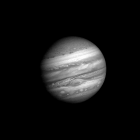 From a distance of 36 million miles, NASA/JPL’s unmanned spacecraft Voyager 1 can already see the planet Jupiter in far greater detail than the cameras aboard Pioneers 10 and 11. Over the next month, Voyager 1 records images as it closes in on its first planetary target, spotting roiling storm clouds and fluid cloud bands with unprecedented clarity; JPL assembles the images into a “movie.” Despite the size of Jupiter at the end of the sequence, Voyager 1 is still over a month away from its closest pass to the giant planet.
From a distance of 36 million miles, NASA/JPL’s unmanned spacecraft Voyager 1 can already see the planet Jupiter in far greater detail than the cameras aboard Pioneers 10 and 11. Over the next month, Voyager 1 records images as it closes in on its first planetary target, spotting roiling storm clouds and fluid cloud bands with unprecedented clarity; JPL assembles the images into a “movie.” Despite the size of Jupiter at the end of the sequence, Voyager 1 is still over a month away from its closest pass to the giant planet.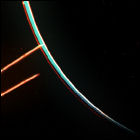 As it nears its closest approach to the planet Jupiter, NASA’s Voyager 1 space probe detects the first likely signs of a ring system around Jupiter’s equatorial region. Barely visible until Voyager 1 is behind the planet and can see them through scattered sunlight, the rings are only about 20 miles thick, but are over 150,000 miles in diameter. The lead time between Voyager 1’s visit and Voyager 2’s later flyby allows ground controllers to plan a better observation campaign for Voyager 1’s sister ship, and the rings are observed in more detail by the later Galileo and New Horizons missions.
As it nears its closest approach to the planet Jupiter, NASA’s Voyager 1 space probe detects the first likely signs of a ring system around Jupiter’s equatorial region. Barely visible until Voyager 1 is behind the planet and can see them through scattered sunlight, the rings are only about 20 miles thick, but are over 150,000 miles in diameter. The lead time between Voyager 1’s visit and Voyager 2’s later flyby allows ground controllers to plan a better observation campaign for Voyager 1’s sister ship, and the rings are observed in more detail by the later Galileo and New Horizons missions. The unmanned NASA/JPL space probe Voyager 1 makes its closest approach to the giant planet Jupiter, a little over 200,000 miles away. While Voyager’s higher-resolution cameras trump any of the Pioneer images of Jupiter, the real revelation proves to be Jupiter’s four largest moons, revealing a smooth-but-cracked icy surface on Europa, craters on Ganymede and Callisto, and the colorful mountains of Io, whose biggest secret goes undiscovered until a few days after Voyager 1’s closest flyby.
The unmanned NASA/JPL space probe Voyager 1 makes its closest approach to the giant planet Jupiter, a little over 200,000 miles away. While Voyager’s higher-resolution cameras trump any of the Pioneer images of Jupiter, the real revelation proves to be Jupiter’s four largest moons, revealing a smooth-but-cracked icy surface on Europa, craters on Ganymede and Callisto, and the colorful mountains of Io, whose biggest secret goes undiscovered until a few days after Voyager 1’s closest flyby. JPL navigation engineer Linda Morabito, double-checking raw Voyager 1 images to ensure that the unmanned space probe is properly aligned for its encounter with Saturn in 1980, discovers the first evidence of active volcanoes on another body in Earth’s solar system: a plume of sulfur erupting over 150 feet above the surface of Jupiter’s moon Io. Scientists rush to check Voyager 1’s other Io images, and find that Voyager’s cameras caught more than half a dozen eruptions in the act.
JPL navigation engineer Linda Morabito, double-checking raw Voyager 1 images to ensure that the unmanned space probe is properly aligned for its encounter with Saturn in 1980, discovers the first evidence of active volcanoes on another body in Earth’s solar system: a plume of sulfur erupting over 150 feet above the surface of Jupiter’s moon Io. Scientists rush to check Voyager 1’s other Io images, and find that Voyager’s cameras caught more than half a dozen eruptions in the act.